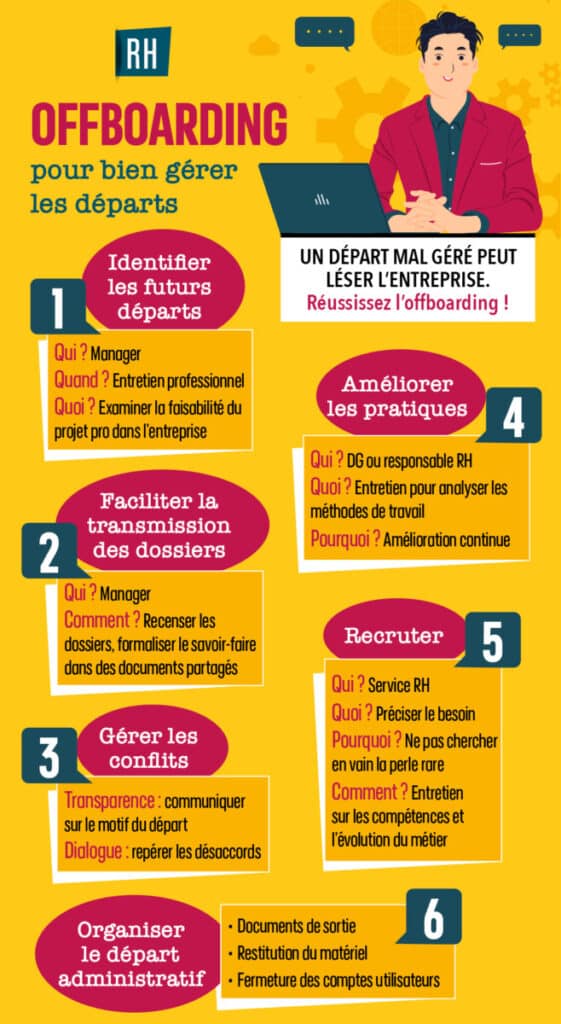Companies recruit and integrate their employees, but they also have to cope with departures. If poorly managed, the departure of an employee can have a considerable impact on their organisation and performance. So how can offboarding be successful? First and foremost, it means maintaining a quality relationship with the employee until he or she leaves. It also means considering and recognising their career path. Finally, it means involving them in the transfer of skills, so that they can better plan their succession internally or externally.

Here are the practical steps for effective offboarding:
- Identifying potential departures
- Facilitating the transmission of files
- Preventing and defusing conflict
- Improving practices
- Recruiting and facilitating internal mobility
- Organising your administrative departure
1. Identify potential departures
Who is the manager? The manager
When is the interview? During the professional interview
What is it?
- Take stock of the employee's career plans and identify whether they are feasible within the company
- In the event of professional retraining, identify opportunities for skills transfer
Why is this?
- Build loyalty
- Capitalising on experience
On a day-to-day basis, this means being attentive to employee motivation and commitment, so as to spot any changes in behaviour and be able to support them.
2. Facilitating the transmission of files
Who is the manager? The manager
What is the meeting about? To review dossiers and their progress
Why should you do this? To anticipate the impact of your departure on the organisation of your department and prepare for the handover of files.
How do we do it?
- Anticipate: the manager must address this issue as soon as the departure is announced!
- Involve the employees concerned on an individual or collective basis
- Formalise know-how in shared working documents
- Follow-up: record the cases handled, the skills and methods passed on...
3. Preventing and defusing conflict
Two best practices in offboarding :
1/ Communicate transparently
Who is it?
- Managers for the team
- HR for business
Why is this?
- Avoid rumours about the reasons for leaving
- Maintaining a good social climate within the team and the company
2/ Spotting weak signals of disagreement
What is it? Impatience, abrupt or nonchalant tone, even radio silence.
How can we help? The manager needs to be a good listener, available and open to dialogue.
Even in the event of disagreement, it is possible to leave on good terms.
4. Improving practices
Who is responsible? The Managing Director or Head of Human Resources (depending on the size or configuration of the company)
What is the interview? An interview to carry out a qualitative follow-up to the departure, to take stock of the working environment, working methods, relations with teams and customers.
Why should we do this? Gather feedback from the departing employee. What did they appreciate? What do they think could be improved?
Please note:
This interview can help to develop professional practices, including by building on what is already working well in the company. Offboarding has its place in a continuous improvement approach!
5. Recruiting and facilitating internal mobility
The departing employee knows his job...
Who are we? The HR department
What is it?
- Specify recruitment needs
- Identifying business gateways to facilitate internal mobility
What's the risk? The risk is in trying to recruit the same profile with long experience in the company. A rare pearl that's hard to find.
What's involved? An interview to identify changes in the job, key skills and skills that are gradually being acquired.
It's also a way of recognising expertise and valuing employees.
6. Organising the "administrative" departure
- Issue exit documents to the employee as soon as possible
- Plan the return of equipment and closure of user accounts
Best practice:
an offboarding checklist
[ Read also ]






